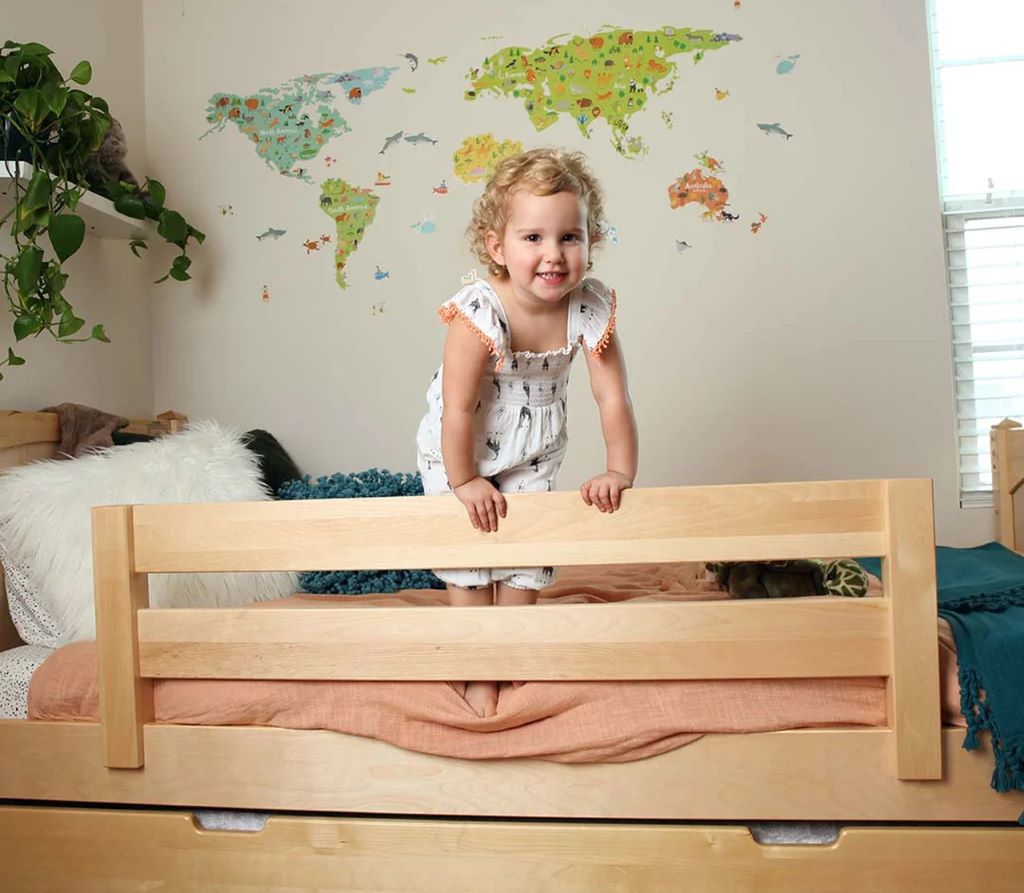Are you a parent, DIY enthusiast, or just looking to invest in furniture that will last for your kids? Look no further! If you’ve ever watched in dismay as your child’s chair wobbles or their table gets scratched beyond recognition, you’re not alone. Kids can be tough on furniture, but fear not – there are ways to make kids’ furniture more durable without sacrificing style or breaking the bank. In this guide, we’ll delve into the art of fortifying kids furniture. We’ll explore practical tips, share some creative ideas, and even throw in a few anecdotes to keep things engaging. So, grab your toolset and let’s get started on the journey to crafting long-lasting, kid-friendly furniture that can withstand even the wildest of playdates.
Understanding the Challenge
Before we dive into the nitty-gritty of making kids’ furniture more durable, let’s take a moment to understand the unique challenges it faces. Kids are a force of nature – they climb, jump, spill, and generally put furniture through its paces. So, what are the common issues you might face?
- Wear and Tear: Kids use furniture for various activities – from arts and crafts to tea parties. This constant use can lead to scratches, scuffs, and dings.
- Sturdiness: Children can be surprisingly rough on furniture. Weak joints and subpar construction can quickly lead to wobbly chairs and tables.
- Spills and Stains: It’s no secret that kids are accident-prone. Beverage spills, crayon marks, and food stains are par for the course.
- Safety: Above all, safety is paramount. You’ll want to ensure that any modifications or enhancements you make to the furniture don’t compromise your child’s well-being.

The DIY Approach: How to Make Kids Furniture More Durable
1. Choose the Right Materials
Imagine building a sandcastle with dry sand – it’s bound to crumble. The same goes for kids’ furniture. Selecting the right materials is the foundation for durability.
- Solid Wood: Opt for solid wood like oak, maple, or birch. They are sturdy and can withstand the test of time. Avoid particleboard or MDF (medium-density fiberboard) as they tend to be less durable.
- Quality Plywood: If solid wood is a bit too pricey, high-quality plywood is an excellent alternative. It’s strong and less susceptible to warping.
- Durable Finishes: Ensure that you use finishes that can handle spills and rough play. Water-based polyurethane and oil-based paints are good choices. These can be cleaned easily and resist wear.
2. Reinforce Joints and Connections
Ever seen a wobbly chair? It’s not just annoying; it can also be dangerous. Reinforcing joints and connections is crucial for both safety and longevity.
- Use Screws, Not Nails: Screws provide superior holding power compared to nails. They are less likely to work loose over time.
- Wood Glue: In addition to screws, use wood glue to reinforce joints. It creates a strong bond that adds to the overall stability.
- Corner Braces: Consider using corner braces or brackets at the joints. These help distribute weight evenly and prevent wobbling.
3. Design for Durability
When crafting or selecting kids’ furniture, consider the design and how it can impact durability.
- Rounded Edges: Opt for furniture with rounded edges. This not only prevents painful bumps and bruises but also reduces the risk of chipping or splintering.
- Avoid Delicate Details: While ornate carvings and delicate details may look charming, they are more likely to break or chip. Stick to simple, sturdy designs.
- Reinforced Bottoms: For tables and chairs, consider adding extra support to the bottom legs. This reduces the risk of them snapping off during rough play.
4. Easy-to-Clean Surfaces
Kids and messes go hand in hand. Choose materials that are easy to clean and maintain.
- Wipeable Finishes: Look for finishes that can be wiped clean with a damp cloth. This makes it a breeze to tackle crayon scribbles, spilled juice, or food stains.
- Removable Cushion Covers: If your furniture has cushions, choose covers that can be easily removed and machine-washed. This prevents permanent stains and odors.
5. Consider Protective Measures
Sometimes, prevention is the best cure. Implement protective measures to shield your kids’ furniture from unnecessary wear and tear.
- Furniture Pads: Attach felt or rubber pads to the bottom of chair and table legs. These prevent scratches on your floors and reduce noise when furniture is moved.
- Tablecloths and Placemats: Use tablecloths or placemats to protect the table’s surface during messy activities like arts and crafts or mealtime.
6. Regular Maintenance
Just like your car or any other valuable possession, kids’ furniture needs regular maintenance to stay in top shape.
- Tighten Screws: Periodically check and tighten screws and bolts to ensure that the furniture remains stable.
- Inspect for Damage: Keep an eye out for any signs of damage or wear. Address issues promptly to prevent them from worsening.
7. DIY Repairs
Kids’ furniture will inevitably suffer a few battle scars. Be prepared to roll up your sleeves and make some DIY repairs.
- Fill and Sand: For small dings and scratches, fill them with wood filler and sand the surface smooth. Then, apply a touch-up finish.
- Reinforce Wobbly Joints: If you notice wobbling, don’t wait until it’s a safety hazard. Reinforce joints with additional screws and glue.
8. Teach Kids Proper Furniture Care
Kids are often more receptive to learning than we give them credit for. Teach them how to take care of their furniture responsibly.
- No Jumping: Encourage them to refrain from jumping on furniture. Explain that it can lead to damage and potential injuries.
- Use Coasters: Teach them to use coasters for drinks to prevent water rings and stains.
- Clean Up After Themselves: Instill the habit of cleaning up spills and messes promptly. The longer they linger, the harder they are to remove.

Creative Ideas to Make Kids Furniture More Durable
Now that we’ve covered the basics, let’s explore some creative ideas to make your kids’ furniture not only durable but also fun and exciting.
1. Personalize with Decals
Kids love to put their mark on things, and decals are a fantastic way to let them do just that. Choose durable, high-quality decals that can withstand wear and tear. Let your child pick their favorite designs or characters, and apply them to the furniture. This not only adds a personalized touch but also protects the surface from scratches and stains.
2. Chalkboard and Whiteboard Surfaces
Why settle for a regular tabletop when you can have a chalkboard or whiteboard surface? Consider painting a section of the table or the chair backs with chalkboard or whiteboard paint. Your kids can draw, doodle, and scribble to their hearts’ content, and you can easily wipe it clean when they’re done. It’s a win-win for creativity and durability.
3. Modular and Expandable Furniture
Investing in modular or expandable furniture is a smart move for parents. These pieces can adapt as your child grows, ensuring that they get years of use out of them. Plus, the ability to reconfigure and expand the furniture reduces the risk of damage from constantly moving pieces around.
4. Upholstered Furniture with Removable Covers
Upholstered furniture can be cozy and inviting, but it’s also prone to stains and wear. To strike a balance, choose upholstered pieces with removable, machine-washable covers. This way, you can easily clean up spills and maintain the furniture’s appearance without the hassle of professional cleaning.
5. Multifunctional Storage
Kids’ rooms can quickly become cluttered with toys, books, and art supplies. Invest in furniture that doubles as storage. Storage benches, ottomans, and beds with built-in drawers are excellent choices. Not only do they help keep the room organized, but they also provide additional durability through their solid construction.
Before purchasing or modifying any children’s furniture, it’s crucial to prioritize safety. Make sure the furniture meets safety standards and hasn’t been subject to any recalls. Check for any sharp edges, loose parts, or choking hazards. Your child’s safety should always come first.
Frequently Asked Questions (FAQs)
- How can I prevent my kids’ furniture from tipping over?
To prevent furniture from tipping over, anchor tall bookshelves, dressers, and other top-heavy pieces to the wall. You can use furniture straps or brackets for this purpose. Additionally, teach your children not to climb on furniture to reduce the risk of tipping.
- What’s the best way to clean and maintain wooden kids’ furniture?
To clean wooden kids’ furniture, use a damp cloth to wipe away dust and dirt regularly. For spills and stains, use a mild dish soap and water solution. Avoid harsh chemical cleaners that can damage the finish. Periodically apply a furniture polish or wax to maintain the wood’s luster.
- Can I repaint or refinish my kids’ furniture to give it a fresh look?
Yes, you can repaint or refinish kids’ furniture to give it a fresh look. Sand the surface to remove the old finish, apply a primer, and then paint or refinish it with your chosen color or stain. Just ensure that the materials you use are child-safe and free from harmful chemicals.
- Are there any eco-friendly options for durable kids’ furniture?
Yes, there are eco-friendly options for durable kids’ furniture. Look for furniture made from sustainable materials like bamboo or reclaimed wood. Choose water-based finishes and paints that are low in volatile organic compounds (VOCs) to reduce environmental impact.
- Can I repurpose or upcycle existing furniture to make it more durable for kids?
Absolutely! Repurposing or upcycling existing furniture can be a sustainable and cost-effective way to make it more durable for kids. Sand, paint, or refinish as needed, reinforce joints, and add protective measures to extend its lifespan. Just ensure that it meets safety standards and is suitable for your child’s age and needs.
In conclusion
Making kids’ furniture more durable is not only a practical endeavor but also a creative one. The growing trend of multifunctional furniture reflects a commitment to both style and durability, as consumers increasingly seek pieces that serve multiple purposes while, by choosing the right materials, reinforcing joints, considering design elements, and implementing protective measures, ensuring long-lasting and attractive investments for their homes, including child’s furniture. So, get ready to embark on this DIY adventure, and watch your kids’ furniture stand up to the test of time, play, and spills.




